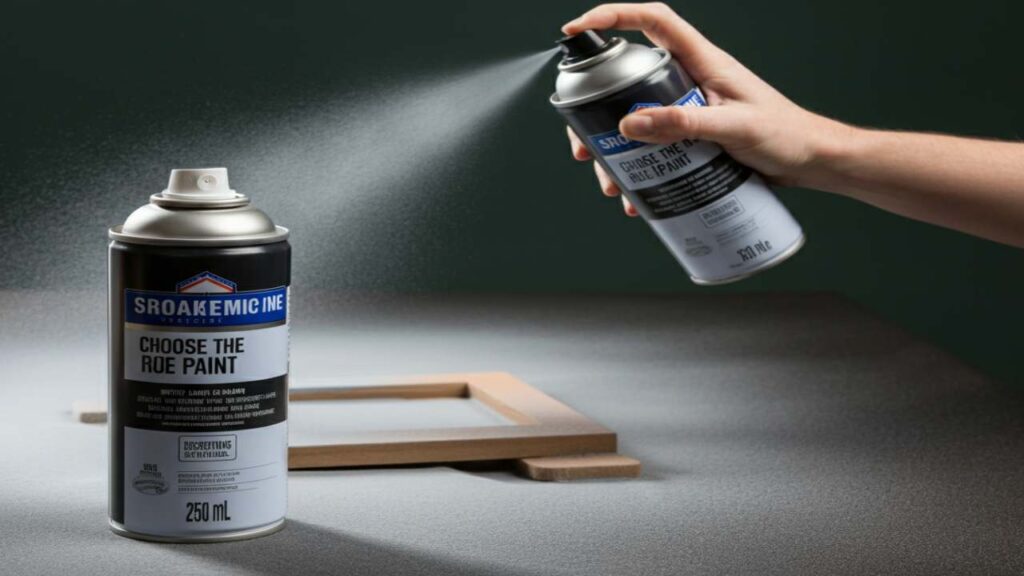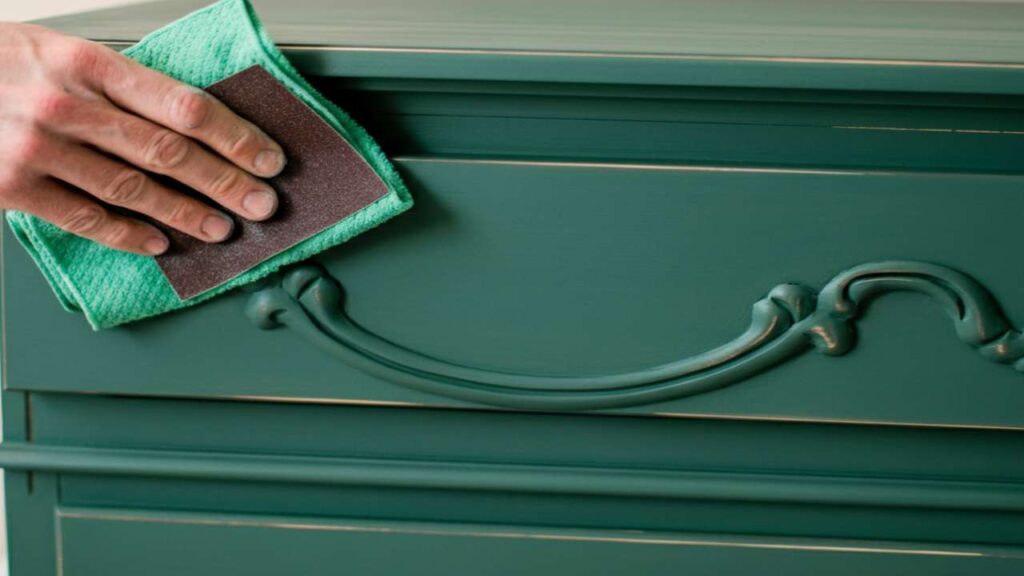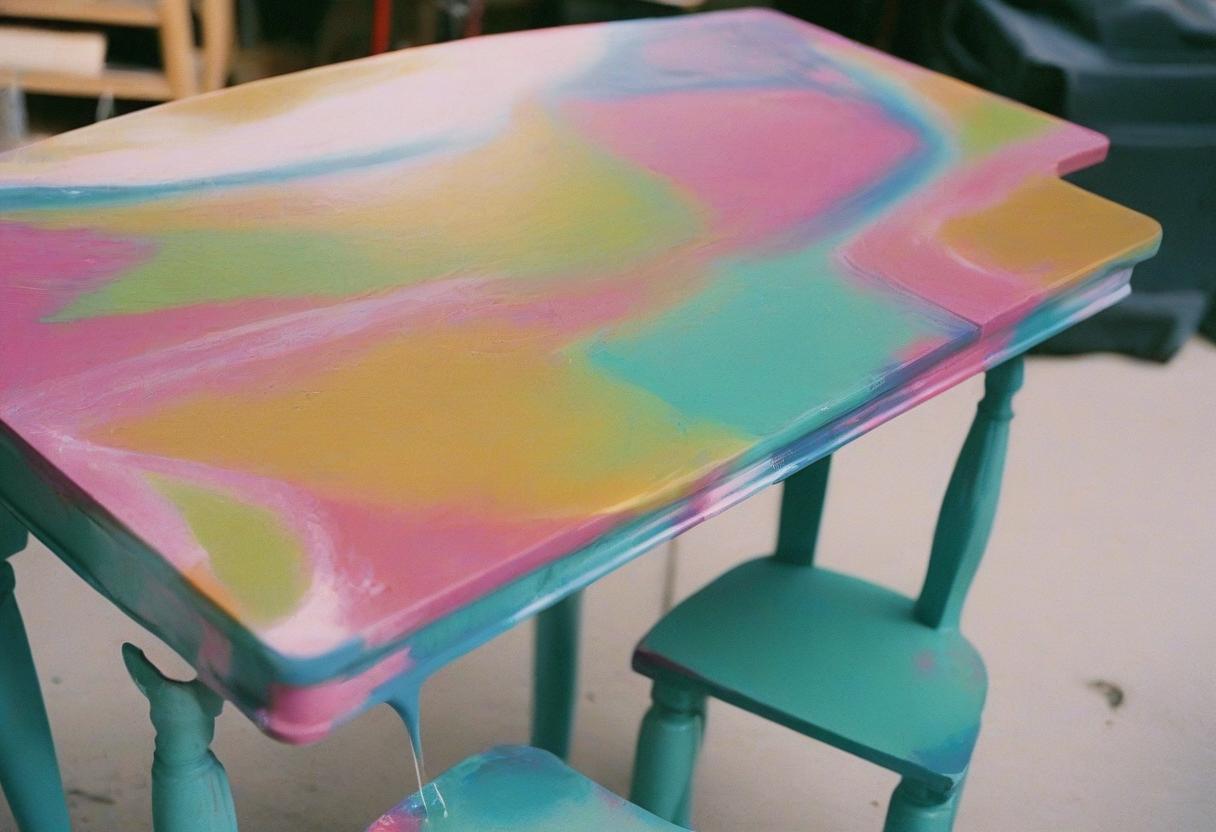Updating furniture with spray paint is one of the most satisfying DIY projects. With just a few tools and cans of paint, you can completely transform a piece into something stunning. Whether you’re refinishing a chair rescued from a thrift store or adding a pop of color to a dull side table, spray painting is an inexpensive and creative way to upgrade your space.
But mastering the art of spray painting takes a little know-how. You’re not alone if you’ve ever had drips, streaks, or uneven paint! This guide will walk you through how to spray paint furniture step by step, ensuring a professional-looking finish every time.
What You’ll Need

Before you begin, gather your tools and supplies. Here’s what you’ll need to get started:
Spray paint: Choose a high-quality spray paint designed for furniture or specific surfaces like wood, metal, or plastic. Brands like Rust-Oleum or Krylon are go-to options for DIYers.
Sanding tools: Fine-grit sandpaper or a sanding block will help smooth the surface.
Primer: Use a primer specifically for your painting material to ensure better adhesion.
Drop cloth or tarp: Protect your work area from overspray.
Painter’s tape: Keep areas you don’t want to be painted free from accidental spritzes.
Lint-free or tack cloth: These are perfect for cleaning dust and debris after sanding.
A respirator mask and gloves: Safety first to protect yourself from fumes and chemicals.
Why Proper Preparation Matters

Skipping prep work is one of the biggest mistakes DIY spray painters make. The key to a flawless finish is a smooth and clean surface. Think of it like painting your nails—if the base isn’t soft and clean, the polish isn’t going to look its best or last long.
Proper preparation helps:
- Avoid paint peeling or flaking over time.
- Ensure an even application of paint.
- Extend the life of your finish.
Now, keep this advice in mind as we walk through the steps!
Step 1: Choose the Right Paint and Location

Not all spray paints are created equal. Determine the type of surface you’re working with—wood, metal, or plastic—and choose the appropriate spray paint. Also, select a paint that fits the desired finish (glossy, matte, satin, etc.).
When it comes to location:
- Work outdoors or in a well-ventilated area. This reduces fume exposure and keeps the smell from lingering in your home.
- Avoid windy days if working outside. Wind can carry paint particles where they don’t belong.
Pro Tip: Spray paints often indicate whether they include built-in primers. If not, apply a separate primer to ensure the best results!
Step 2: Clean and Sand Your Furniture

Start by cleaning your furniture thoroughly. Use a damp cloth to remove dust, dirt, or sticky residue. If the piece is greasy, a mild soap solution will help clean it effectively.
Next, sand the surface to remove imperfections like old paint, scratches, or bumps:
- Use fine-grit sandpaper (220 grit) for light smoothing surfaces.
- Heavily marked areas may require medium-grit sandpaper (80-120 grit).
Sand evenly, but avoid going overboard—you don’t want to damage the furniture’s shape or details.
After sanding, wipe the piece with a lint-free cloth or tack cloth to remove dust.
Step 3: Apply a Primer (If Necessary)

Primer acts as a bonding layer between your furniture and the spray paint. It ensures the paint sticks properly and reduces the chance of peeling or chipping.
- Choose a primer that matches your spray paint type. For instance, if you’re painting metal, use a primer designed specifically for metal surfaces.
- Hold the primer about 10-12 inches from the surface and apply in light, even coats.
Allow the primer to dry completely before moving on to the next step. Drying times are typically indicated on the can, but 1-2 hours should be sufficient.
Step 4: Start Spray Painting
Now comes the fun part! Follow these tips for a smooth and even paint job:
Shake the Can
Shake the spray paint thoroughly for 1-2 minutes before using it. This ensures the pigments and solvents are mixed evenly.
Use Smooth, Even Strokes
- Hold the can 8-12 inches away from the surface.
- Spray in light, sweeping motions, moving back and forth across the piece. Avoid pausing or holding the spray in one spot, as this creates drips.
Build Up Thin Layers
Apply multiple thin coats rather than one heavy one. This helps avoid streaks and uneven textures. Wait 10-15 minutes between each coat to allow the paint to dry slightly before adding another layer.
Pro Tip: Don’t worry if the first coat looks imperfect. Spray paint builds up with each layer.
Step 5: Allow Proper Drying Time
Once you’re satisfied with the color and coverage, allow your furniture to dry:
- Most spray paints dry to the touch in about 30 minutes to 1 hour.
- Complete curing (where the paint is completely hardened) can take 24-48 hours.
For the best results, please resist the urge to use your furniture until it’s fully cured!
Step 6: Add a Protective Finish (Optional)
If you want to extend the life of your painted furniture, consider adding a clear protective topcoat:
- Use a clear spray paint sealer in the finish of your choice (glossy, matte, etc.).
- Apply the same way as your paint, with even sweeping motions.
- Allow the sealer to dry completely before using the furniture.
Pro Tip: A topcoat is especially important for pieces that will experience high usage or heavy wear, like chairs or coffee tables.
3 Common Mistakes to Avoid
Skipping sanding – This step ensures your paint adheres properly and lasts longer.
Spraying too closely – Holding the can too close to the furniture can cause drips and uneven areas.
Impatience – Rushing the process or not letting the paint fully dry can ruin the final result.
Frequently Asked Questions
Q: Do I need to sand all types of furniture before painting?
A: Sanding is crucial for creating a smooth surface and increasing paint adhesion. Even furniture with an existing finish should be lightly sanded to help the new paint bond effectively.
Q: Can I skip the topcoat if I’m using high-quality paint?
A: While high-quality paint offers durability, applying a topcoat provides an extra layer of protection, especially for heavily used or outdoor furniture, ensuring your work lasts longer.
Q: How long should I wait between coats of paint?
A: Always check the instructions on your paint can, but as a general rule, allow 24 hours between coats to ensure the paint dries thoroughly and prevents smudging.
Q: Can I use spray paint on all types of furniture?
A: Spray paint works well on many surfaces, but for the best finish, it’s important to use primers and paints designed for the material you’re working on, such as wood, metal, or plastic.
Final Thoughts
Spray painting furniture is the perfect way to experiment with your home decor, upcycling old pieces to fit your unique style. With the steps outlined above, you’re ready to tackle your first—or next—project like an expert.
If you’ve always wanted to create professionally styled pieces but feel unsure about your technique, this guide provides everything you need. Grab your spray paint and get creative because the possibilities are endless.











